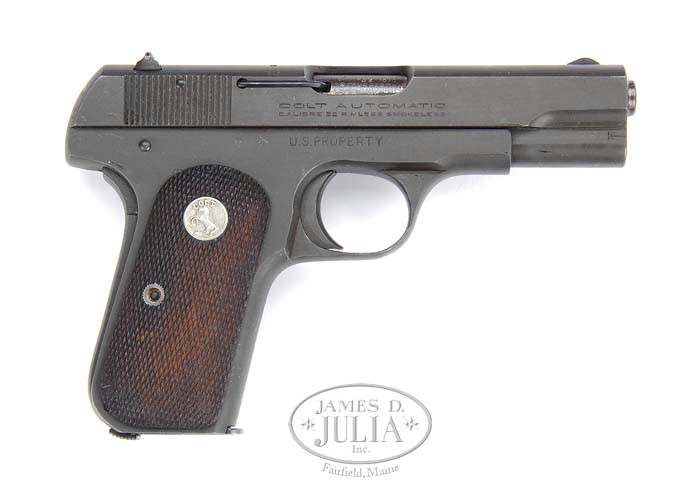The basic purpose of the grip safety was that it did one thing simply which was block the sear until it was depressed. (I mentioned that Browning extended the tang of the safety so that it would allow for one handed decocking, this was before the thumb safety was added.) It was a simple design, and still is.
The military never thought it needed the Swartz safety (the type used by Kimber) which was developed in the 1930s. They did not add it to the guns they used during the entire time they used the 1911. Though in the last decade or so both some Marine special forces units have used both Kimbers, with the Swartz and Colts with the Series 80 firing pin safety in them.
Someone mentioned earlier that during WWII the Navy had accidents with guns dropped on the steel decks of ships. This is true but the incidents were with S&W revolvers. The Navy compelled S&W to install a hammer block type safety in their revolvers whch made them drop safe. It never asked Colt to do the same in the 1911. The safety in the 1911 made the gun drop safe as far as the Navy was concerned. The Marines and the Army felt the same.
A bit more on the Series 80 system;
http://forums.1911forum.com/showthread.php?t=15201
Throughout the life of the 1911 the grip safeties have been pinned or deactivated by some individuals who had issues with it due to the shape of their hands or how they gripped the guns. It's easy enough to do.
Others have had issue with the Series 80 safeties which work off the trigger. Which can also be deactivated or removed. Personally I think the Series 80 is the better of the two types and is more reliable than the Swartz type. Kimber has had problems with the latter.
tipoc
The military never thought it needed the Swartz safety (the type used by Kimber) which was developed in the 1930s. They did not add it to the guns they used during the entire time they used the 1911. Though in the last decade or so both some Marine special forces units have used both Kimbers, with the Swartz and Colts with the Series 80 firing pin safety in them.
Someone mentioned earlier that during WWII the Navy had accidents with guns dropped on the steel decks of ships. This is true but the incidents were with S&W revolvers. The Navy compelled S&W to install a hammer block type safety in their revolvers whch made them drop safe. It never asked Colt to do the same in the 1911. The safety in the 1911 made the gun drop safe as far as the Navy was concerned. The Marines and the Army felt the same.
A bit more on the Series 80 system;
The single biggest change to the 1911 design came about in 1983, when Colt introduced the "MK IV Series 80" pistols. These guns incorporated a new firing pin block safety system, where a series of internal levers and a plunger positively blocked the firing pin from moving until the trigger was pressed, thus eliminating the possibility of the gun discharging if dropped onto a hard surface or struck hard. In this instance however, ALL of Colt's 1911-pattern pistols incorporated the new design change so even the Commander and Officer's ACP pistols became known as Series 80 guns...
There was one other design change made to the Series 80 guns as well, and that was a re-designed half-cock notch. On all models the notch was changed to a flat shelf instead of a hook, and it is located where half-cock is engaged just as the hammer begins to be pulled back. This way the half-cock notch will still perform its job of arresting the hammer fall should your thumb slip while manually cocking the pistol, yet there is no longer a hook to possibly break and allow the hammer to fall anyway. With the notch now located near the at-rest position, you can pull the trigger on a Series 80 while at half-cock and the hammer WILL fall. However, since it was already near the at-rest position the hammer movement isn't sufficient to impact the firing pin with any amount of force.
http://forums.1911forum.com/showthread.php?t=15201
Throughout the life of the 1911 the grip safeties have been pinned or deactivated by some individuals who had issues with it due to the shape of their hands or how they gripped the guns. It's easy enough to do.
Others have had issue with the Series 80 safeties which work off the trigger. Which can also be deactivated or removed. Personally I think the Series 80 is the better of the two types and is more reliable than the Swartz type. Kimber has had problems with the latter.
tipoc

